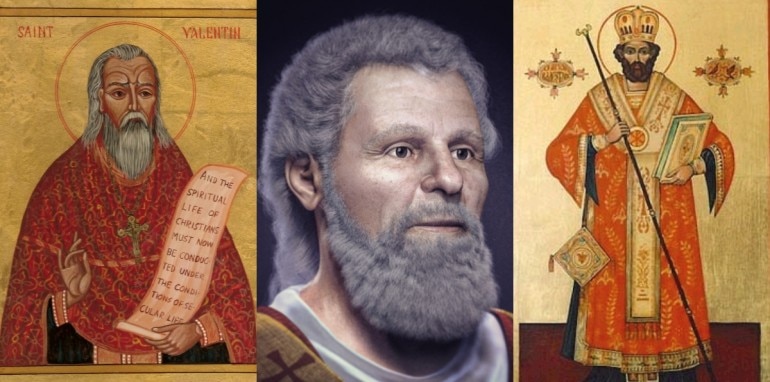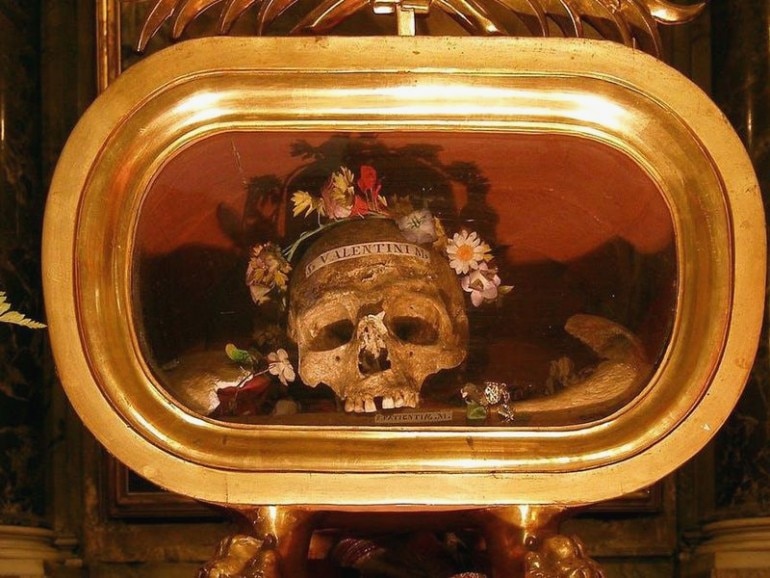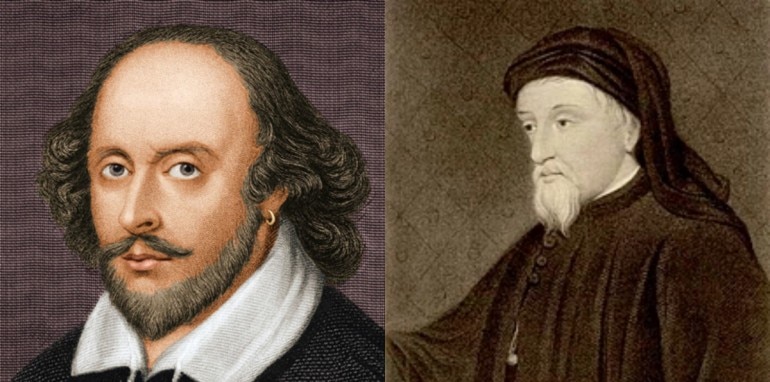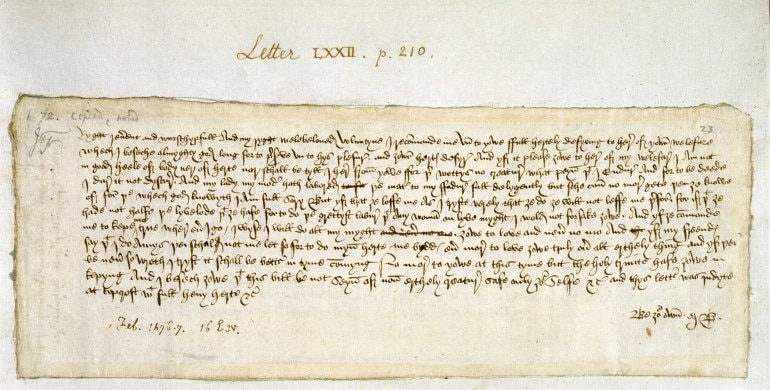History of Valentine's Day: When men beat women with bloody animal hides for 'fertility'
The history of Valentine's Day is rather gory and sometimes fantastical. But how much of it is really true?

Even though this 'day of love' has most couples rushing to make each other happy with flowers, gifts and candies, the history of Valentine's Day is rather dicey. Most people picture a romantic St. Valentine who wrote the first love poems for his beloved and made the day famous in his name when he died. But that is nowhere near the truth.
There was not just one third century St Valentine, but two or even three, and none of them were remotely romantic in the way we understand it.
But even before these saints, there was the gory pagan festival of Lupercalia, which was hushed up and replaced with the more demure and 'Christian' St. Valentine's Day.

Pagan origins of Valentine's Day
The origin of Valentine's Day has a few very gory tales associated with it. Many believe that fixing February 14 as the date for St Valentine's feast day was an attempt to 'Christianise' the pagan fertility festival of Lupercalia, dedicated to the Roman god of agriculture Faunus, and the founders of Rome -- Romulus and Remus.
To celebrate Lupercalia during February 13 to 15, the members of the order of Roman priests called 'Luperci' assembled in the sacred cave where Romulus and Remus were supposed to have been taken care of by the she-wolf. The priests would then sacrifice a dog for purification and a goat for fertility.
The goat hide would then be cut into strips, sipped into sacrificial blood, and taken to the streets to slap women and crop fields to improve their fertility.
Though the men were half-naked and running through the streets, the women welcomed this act as per the beliefs of the time and actually lined up for the same.

Later on, all young and unmarried women would put their names in a big urn and the bachelors in the city would pick out a name from it, after which the couple would be paired for a year. This arrangement often ended with the couples being married.
The rowdy festival was denounced by Pope Gelacius I in 496 AD. But there is no strong proof that St Valentine's Day was established particularly to replace or cover up Lupercalia.
Who were the three St Valentines?
Historical records from the Bollandists -- an order of Belgian monks who started off in 1643 to spend three centuries recording the details of every Christian saint -- tell us that there were three St Valentines who apparently died on February 14.
Two of them were executed by Roman Emperor Claudius Gothicus in 269-270 AD, a time when persecuting Christians was the order of the day.
The stories about 'Valentini' were numerous but the oldest three are the most significant. The earliest account of Valentinus was just about a man who died in Africa with 24 soldiers, while the two other stories had more information.
The second Valentinus was a Roman priest who was arrested at the time of Gothicus and put into the custody of Asterius, an aristocrat. As the preacher preached, Asterius promised to convert if Valentinus could cure the blindness of his foster-daughter.

The priest was successful and the entire family of Asterius was baptised. However,the emperor ordered all of them to be executed. However, only Valentinus was beheaded, and a devoted widow buried his body on Via Flaminia, over which a chapel was built much later.
The third Valentinus was a bishop of Terni, in Umbria, Italy. His story is very similar to the second priest's. He debated with a potential convert, healed his son, was beheaded on the orders of Gothicus, and was buried along Via Flaminia.
Because of the uncanny similarities, the Bollandists suggest that the second and third Valentinus were probably the same person whose legend became popular in different tales in Rome and Terni.
However, whichever way you look at it, none of these African, Roman or Umbrian St Valentines were lovers or romantics.
Medieval fantasy tales bringing in the 'romantic' factor
As time passed, stories of miracles surrounding the saints came up in the Middle Ages which talked about St Valentine performing secret marriage rituals when Emperor Claudius II outlawed marriage for young men as men without families made better soldiers.
Another tale said St Valentine was killed for helping Christians escape the torture-filled Roman prisons, while another legend said that the saint fell in love with his jailor's daughter and send her a message before his death, signed "From your Valentine" - an expression used even today.
But Bollandists point out that these tales have no historical basis.

Many monasteries and churches around medieval Europe also started to claim that they have some piece or another of one of the dead saints.
Believers eulogised the 'powers' of the presence of the St Valentines and one 11th century bishop in Brittany used a supposed head of one of the Valentines to cure illnesses, prevent epidemics and even stop fire.
But even then, the remains of St Valentines had no special power over love or lovers, even though the saints in question were definitely sympathetic heroes for the people.
Galatin's Day could have been another factor in the confusion - this was yet another celebration of fertility by the Normans held in February, and the word 'Galatin' meant 'lover of women'.
How Chaucer and Shakespeare romanticised Valentine's Day
Even though Lupercalia was outlawed, the day became very much associated with love. It was believed in Middle Age France and England that mid-February was the mating time for birds. And this stressed boosted the idea that February 14 should a day of love.

This mainly happened when Geoffrey Chaucer, the author of 'The Canterbury Tales' associated the February feast of St Valentinus to the mating of birds in his 'Parlement of Foules'.
William Shakespeare also had a big hand in popularising February as the month of love throughout Britain and the rest of Europe. In his famous play 'Hamlet', Ophelia calls herself Hamlet's Valentine.
Which were the oldest Valentine's Day messages?
The oldest known Valentine's Day message that we still have now is a love poem written by Charles, Duke of Orleans, in February 1415 to his wife while he was imprisoned in the Tower of London following his capture at the Battle of Agincourt. He called her his "very gentle Valentine" in his letter.
Another of the oldest V-Day messages we have was written by Margery Brews to her fiancé John Paston in February 1477.

Years later, King Henry V is said to have hired a writer named John Lydgate in order to write a love note for Catherine of Valois.
The card-sending tradition of Valentine's Day
Valentine's Day, as we know it now, started to become popular in Great Britain around the 17th century. By the middle of the 18th century or the 1700s, friends and lovers began to exchange handmade notes or tokens of love. Direct profession of love was discouraged at the time, and cheap postage rates contributed to the growth of V-Day cards.
The 'mother of Valentine' Esther A Howland started to make and sell items created with lace, ribbons and colourful pictures as Valentine's Day tokens.
By 1900, when the industrial revolution and printing technology started to grow popular, printed cards started to make an appearance. Hallmark Cards of Kansas City, Mo. Started mass producing V-Day cards in 1913.

Soon after, chocolate manufacturers such Cadbury and Hershey's started to make chocolates, especially for sweethearts to gift each other on Valentine's Day.
Today, Valentine's Day is a capitalised institution, marketed for a week in February along with Rose Day, Hug Day, Kiss Day etc. It is the second largest card-sending holiday of the year with 145 million Valentine's Day cards sent each year.
According to market research firm IBIS World, Valentine's Day sales amounted to 1,383 million pounds in 2018 in the UK, which translates to a staggering Rs 1,26,20,40,19,962 - more than 12 thousand crores!
Read: How did the love sign originate?
